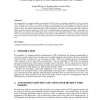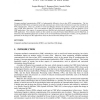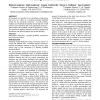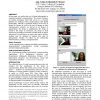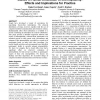ETS
2000
IEEE
2000
IEEE
Using computer-mediated communication to form a knowledge-building community with beginning teachers
14 years 3 months ago
This study investigated how different types of computer-mediated communication (CMC) such as asynchronous forums, synchronous forums and e-mail were used to support an alternative...
IADIS
2004
14 years 5 months ago
2004
The demographics of computer-mediated communication (CMC) users have changed considerably over the last twenty years. Whereas in the 1980's it was largely academics, and comp...
IADIS
2004
14 years 5 months ago
2004
Computer-mediated communication (CMC) is fundamentally different to face-to-face (FTF) communication. The low bandwidth of CMC filters out important social and contextual cues, wh...
INTERACT
2007
14 years 5 months ago
2007
This paper discusses how semiotic engineering can support the formulation of problems and solutions involved in handling face-to-face (F2F) sociability models in computer-mediated ...
CSCW
2008
ACM
14 years 5 months ago
2008
ACM
Responsiveness, or the time until a person responds to communication, can affect the dynamics of a conversation as well as participants' perceptions of one another. In this p...
CHI
2003
ACM
15 years 4 months ago
2003
ACM
In this paper, we describe two novel patterns of interaction that arose in a study of a computer-mediated feedback system for the university classroom. In both patterns, students ...
CHI
2005
ACM
15 years 4 months ago
2005
ACM
In this paper, we explore the use of digital photographs in computer-mediated communication. We present Lascaux, an instant messaging client that serves as a research platform for...
CHI
2007
ACM
15 years 4 months ago
2007
ACM
People have developed a variety of conventions for negotiating face-to-face interruptions. The physical distribution of teams, however, together with the use of computer-mediated ...

